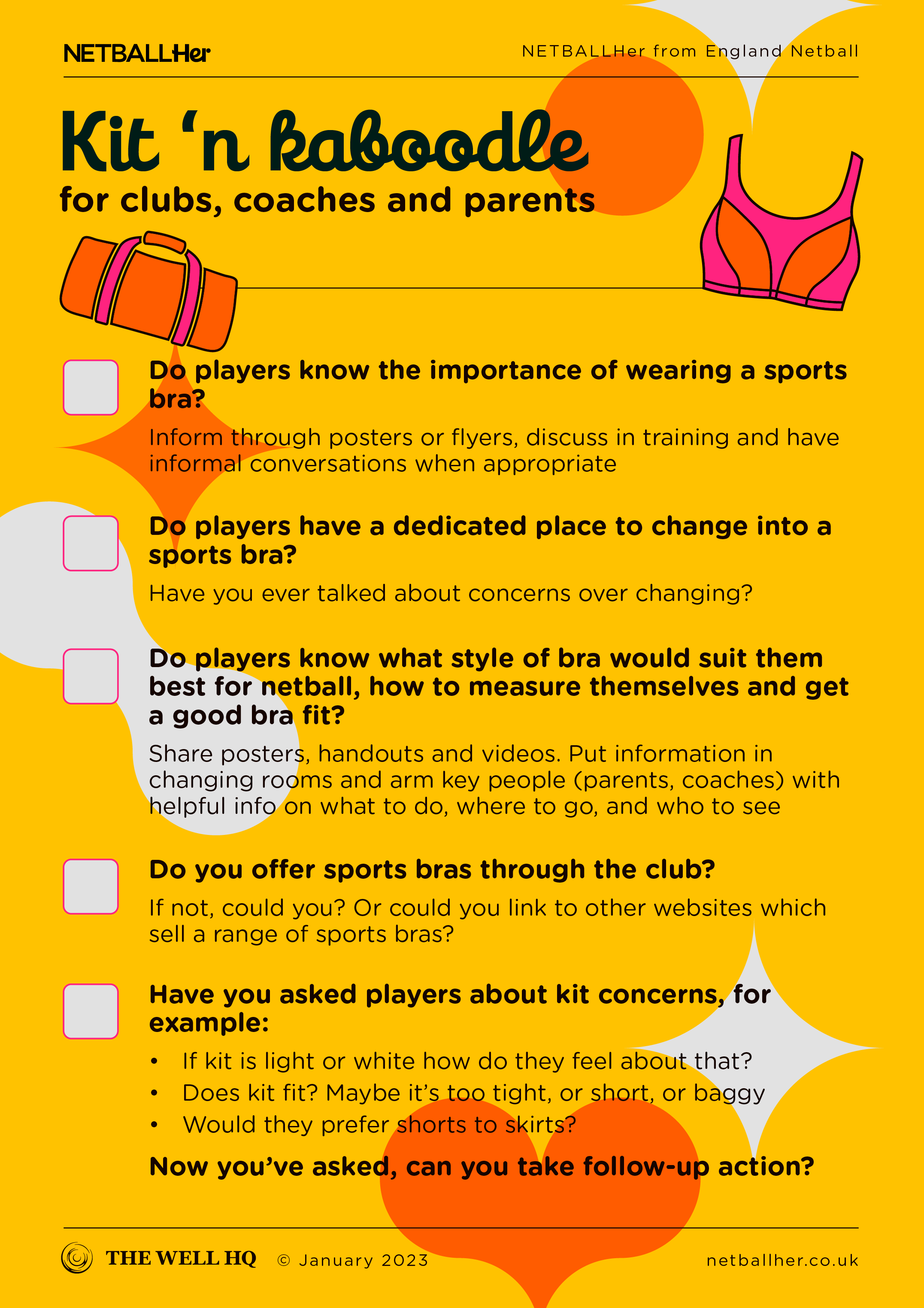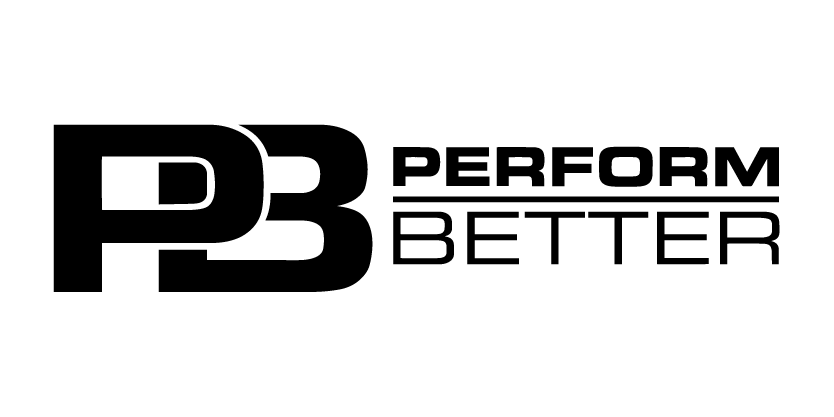Click play for an audio readthrough of this article
The hidden and obvious ways kit impacts comfort, enjoyment and performance.
Here’s some common ones in netball:
- The shooter who pulls her top down afraid she’ll expose her tummy the second the ball leaves her hands
- The girls walking to games in tracksuit bottoms she has rolled over at the top
- The netballer whose dress is so short she continually tugs it during matches
- The women in tops where the club crest gets distorted as it stretches over their breasts
- The women in dresses where material gathers at the hips
- School girls with larger breasts struggling to get a bib on, or finding the fit uncomfortable or embarrassing
This list could go on and on and these are just the issues we can see.
There’s also the girl on her period who’s so fearful she’ll leak through her light-coloured kit that she won’t enjoy the game one bit. Equally common, there’s the girls on the sidelines; not playing at all because their silent kit anxieties are much too much.
Dreams and nightmares
Kit is one of the most emotive topics in sport. People dream about kit – playing for a badge and belonging to a tribe. Having a certain level of success embossed on your chest – that’s really cool … or at least it should be.
For all the positives around kit there are many negatives. It’s not inclusive for all body shapes and sizes. It can exacerbate body image concerns. It can make you feel like you don’t belong. It can hinder your performance. It can cause anguish and anxiety.
Here are what we think are the worst kit conundrums:
1. The obvious one – white kit
In football in 2022 some clubs, like Manchester City Women, moved away from wearing white shorts, after players spoke up about being uncomfortable. It’s a problem. Research shows that over 64% of school-age girls will stop playing sport by their mid-teens, primarily because of period pain and shame, and a further study by Women in Sport earlier this year revealed that a remarkable 70% admitted they avoid sport while menstruating. For those girls who experience heavy periods every month (which is about 30%), there’s just too many days when light kit won’t work.
And it’s not just players that have issues. Netball officials, for example, are often put in white kit to run the line. For these women, often in midlife, the perimenopausal menstrual cycle becomes hard to predict and periods can become increasingly irregular and unexpectedly heavy. In later years, those same fears from our early menstruating years can easily return.
The fix
Altering kit (and attitudes) so that girls and women can feel more confident when playing or officiating on their period would be a game-changer.
We know that changing kit completely is tricky when there are sponsors, supply contracts, official kit regulations, costs and tradition to consider. Women playing tennis at Wimbledon spent years trying to get permission to wear dark coloured undershorts beneath their regulation white kit before finally succeeding in 2022. We also know that some girls and women love their light coloured kit because it’s part of the club, county or even country strip.
So if changing kit isn’t possible, or not wanted, then allowing girls to wear dark-coloured cycling shorts or leggings under dresses, skirts, skorts and shorts can make a huge difference. Period underwear can also help massively and brands like NixiBody offer soft, breathable fabrics designed with sport in mind. Whether worn alone, or with a tampon to offer extra protection against leaks, period pants can dial back the anguish related to their white kit.
2. The sneaky one – “unisex”
Treating women as smaller men is never the answer. And simply changing the name of a certain style to unisex, without changing much about the design, doesn’t magically make it a better fit for a female.
Women have smaller shoulders. We have breasts. We have smaller waists, wider hips and rounder bottoms than men. In unisex kit that hasn’t been properly cut for the female shape, we often see girls and women having to buy bigger sizes to get the width they need in the hips or chest. In the right size, unisex kit is often too tight for breasts and bottoms, or it bunches in the wrong places.
The fix
Buy female-fit kit: designed-for women, not adapted-to women. And don’t be duped into assuming items like skorts must only be made for female bodies. Despite skorts being exclusively worn by women, they’re often based on a male short design with a skirt feature popped on top in a faceless factory somewhere. So yes, even skorts are commonly shy on room for hips and bums.
Here’s a simple eyeball test to assess kit fit: lay it out flat on a table. Make sure the outline isn’t box-like or straight. Make sure it has extra fabric and / or that its cut will accommodate hips and bums. On tops, make sure there’s excess fabric around the bust to accommodate your breasts. Capped sleeves are another warning sign, and there should be decent width at the hem of a t-shirt to allow for hips. Iif there isn’t, the top will gather and bunch.
The editable one – tracksuit bottoms
It’s pretty common to see females rolling over the tops of their tracksuit bottoms in order to cope with excess material in the crotch. An excessive crotch-to-waistband measurement with no variation on leg length is an obvious telltale that trackie bottoms are made to a male design … or at least not to a female one.
We know that limited size options, often driven by minimum orders at the factories making them, are generally to blame for this and we know girls and women tend to have a bit of a just make do attitude with items like tracksuit bottoms. No-one forces us to wear them and we can simply roll them up.
But still, in many ways they’re a critical part of kit; especially for warming up and cooling down. Why should we have to compromise?
The fix
Rather than boys’, men’s or unisex fit, opt for ladies- fit tracksuit bottoms. These will have a shorter rise from crotch to waistband, so no need to roll over to eliminate excess fabric. They’ll also be designed to fit the hips rather than the waist, and even better if they come in a selection of leg lengths.
The complicated one – skirts/skorts
The skort was a gamechanger when it first arrived. “Game kilts and knickers” are now thankfully a thing of the past. But skorts are still problematic, usually because they’re cut wrong and don’t allow for hips and bums without winding up micro length. Many skorts also sport waistbands that are the wrong width, and that flip and twist the more you wash and wear it.
The fix
Again, check the cut of your skorts actually allows for hips and bottoms. Also, the fabric used in skorts is often a polyester but it’s worth checking whether or not the undershorts have a cotton element – as this’ll be much more comfortable.
3. Sexualised design, misguided sizing
There’s a great cheat in the sportswear world: take an item of men’s clothing; run elastane through it; make it smaller; make it clingier and ta-da … woman’s cut.
But all too often this cheat makes for a shape-exposing garment that’s really off-putting, whether you’re a self-conscious teen with a changing body, a postnatal woman with a new shape, or a midlife woman getting used to a different tummy and bust.
Girls and women’s kit should be able to be loose-fit, modest and comfortable. So why always tight, sexy and revealing?
The introduction of leggings into school PE kits, and the rise of leggings as popular training kit, raises challenges of its own. Leggings are great in that they offer modesty, warmth and don’t restrict movement. Yet the market is full of leggings that are see-through or designed to “enhance shape”. While these are negative messages to send to girls and women about their bodies, which are amazing as they are, any kind of “shape enhancing” usually comes at the expense of fit and comfort.
At the heart of everything is sizing. And a really intriguing question to ask of the clothing industry is why women cannot shop for clothes using the same measurements as men? We have a neck, chest, waist and inside leg too. But we usually have to shop in ladies dress sizes (8, 10, 12) — or worse yet: small, medium, large — with the assumption being that we’re always the same size top to bottom, and we’re all the same height and proportions. On top of that, we have to navigate complicated bra sizes.
Do we really have to fit this mould, or is this approach outdated and impractical?
It’s great for suppliers because it massively reduces their stock holding and costs. Why stock all these variations when you can get away with pooled sizing?
But one of the saddest things I’ve seen in my career is girls striving to be a certain size, and then when it doesn’t fit, attacking their body and creating the narrative “my body is weird, things don’t fit me”. It’s toxic and it’s very difficult to un-do once the seed is sown. More often than not, it’s the clothes that are a weird shape, not your body.
Your action points
- Look closely at kit and don’t be fooled by labelling. Find kit that fits you, and don’t be distracted by the sizing – if you are usually a size 14 but an 18 dress fits better around your bust and in the length – get that. The number on the label doesn’t matter.
- If you hate your kit – speak up. People won’t change what they don’t think they need to. Respectfully, and with the caveat that wholesale change might not be practical or possible, have conversations about why kit is holding you back from enjoying and / or performing. Check in with players, coaches and officials about what they think of their kit. Listen to a variety of women, who represent the sizes, shapes and lifetstages of the game.
- Remember if the kit doesn’t fit well, it’s not how your body is made that’s the problem. The industry overall is very poor … please don’t ever think it’s you.
As a reminder, the content of the course belongs to The Well HQ. You have permission to access and use the content yourself or, if you are an organisation, for the number of users selected, but are not otherwise permitted to share such content with others, all in accordance with our Course Terms and Conditions.


























